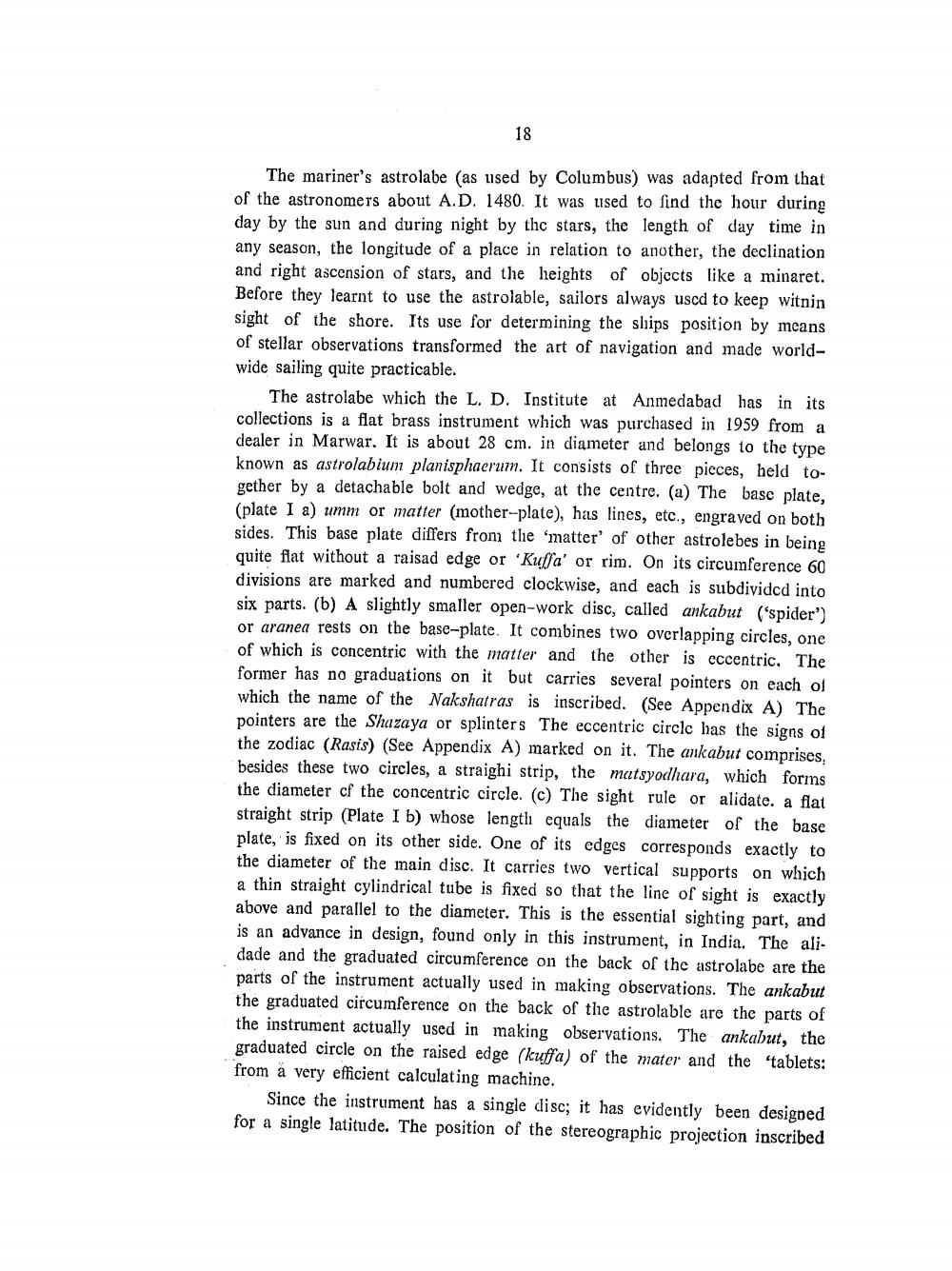________________
18
The mariner's astrolabe (as used by Columbus) was adapted from that of the astronomers about A.D. 1480. It was used to find the hour during day by the sun and during night by the stars, the length of day time in any season, the longitude of a place in relation to another, the declination and right ascension of stars, and the heights of objects like a minaret. Before they learnt to use the astrolable, sailors always used to keep witnin sight of the shore. Its use for determining the ships position by means. of stellar observations transformed the art of navigation and made worldwide sailing quite practicable.
The astrolabe which the L. D. Institute at Anmedabad has in its collections is a flat brass instrument which was purchased in 1959 from a dealer in Marwar. It is about 28 cm. in diameter and belongs to the type known as astrolabium planisphaerum. It consists of three pieces, held together by a detachable bolt and wedge, at the centre. (a) The base plate, (plate I a) umm or matter (mother-plate), has lines, etc., engraved on both sides. This base plate differs from the 'matter' of other astrolebes in being quite flat without a raisad edge or 'Kuffa' or rim. On its circumference 60 divisions are marked and numbered clockwise, and each is subdivided into six parts. (b) A slightly smaller open-work disc, called ankabut ('spider") or aranea rests on the base-plate. It combines two overlapping circles, one of which is concentric with the matter and the other is eccentric. The former has no graduations on it but carries several pointers on each of which the name of the Nakshatras is inscribed. (See Appendix A) The pointers are the Shuzaya or splinters The eccentric circle has the signs of the zodiac (Raris) (See Appendix A) marked on it. The ankabut comprises, besides these two circles, a straighi strip, the matsyodhara, which forms the diameter of the concentric circle. (c) The sight rule or alidate. a flat straight strip (Plate I b) whose length equals the diameter of the base plate, is fixed on its other side. One of its edges corresponds exactly to the diameter of the main disc. It carries two vertical supports on which a thin straight cylindrical tube is fixed so that the line of sight is exactly above and parallel to the diameter. This is the essential sighting part, and is an advance in design, found only in this instrument, in India. The alidade and the graduated circumference on the back of the astrolabe are the parts of the instrument actually used in making observations. The ankabut the graduated circumference on the back of the astrolable are the parts of the instrument actually used in making observations. The ankabut, the graduated circle on the raised edge (kuffa) of the mater and the 'tablets: from a very efficient calculating machine.
Since the instrument has a single dise; it has evidently been designed for a single latitude. The position of the stereographic projection inscribed




